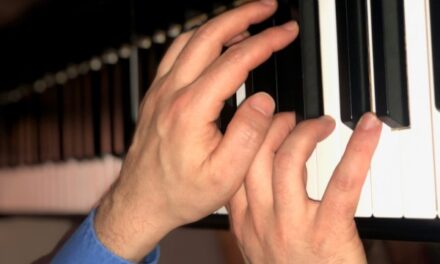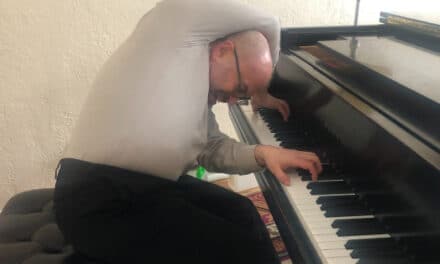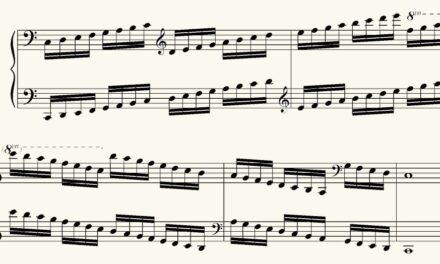HOW TO PRACTICE PIANO ARPEGGIOS
(THE ONLY ARPEGGIO EXERCISE YOU’LL EVER NEED)
How would you like to be able to play arpeggios on the piano with complete confidence? Well, I have a great exercise to share with you that will help you do exactly that! I honestly think it’s the only piano arpeggio exercise you’ll ever need. And this post will show you how to practice piano arpeggios most effectively.
But first, I want to help you get excited about practicing arpeggios. Lots of piano teachers assign arpeggios and lots of piano students struggle through them. But why should you make arpeggios part of your practice routine?
WHY PRACTICE ARPEGGIOS?
It’s for the same reason I discuss in my post about practicing scales. Arpeggios are a big part of literally thousands of pieces of music. They’re in all styles of music from all times. From music written hundreds of years ago to something someone is writing right this second, you’ll find arpeggios everywhere!
And if you can play arpeggios confidently, you’ll be able to play them pretty easily when you find them in a piece of music.
ARPEGGIOS IN FAMOUS PIANO MUSIC
Not only are arpeggios part of lots of music. There are some pieces of music that are almost nothing but arpeggios! Like the last movement of Beethoven’s Moonlight Sonata.
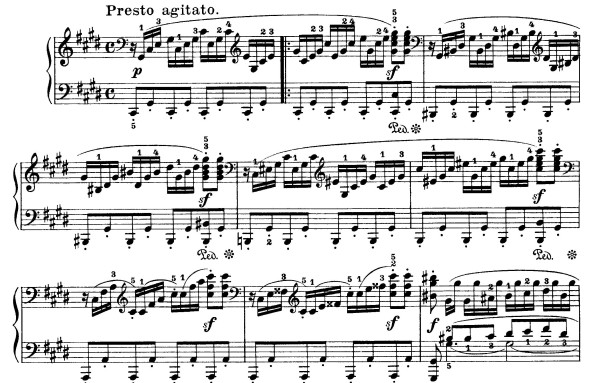
Now, this movement of the Moonlight Sonata is a hard piece of music. And you would definitely have to practice it, no matter how well you can play arpeggios. But if you master arpeggios, you have a big head start on this piece.
Right below, take a look at the concert etude “Un Suspiro” by Liszt. Among pianists, the name Liszt practically means “very difficult music.” And etudes themselves are tricky. They’re supposed to focus on technical challenges. In this case: arpeggios, with a little bit of hand-crossing thrown in.
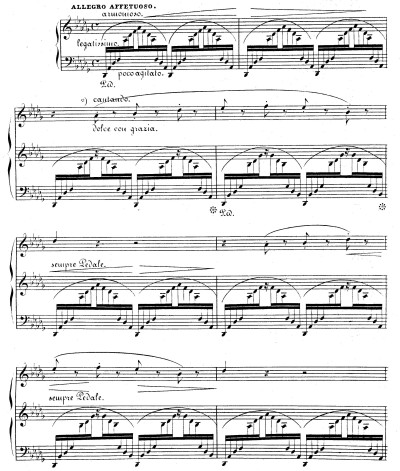 In fact, arpeggios are such a huge part of music that the Music Teachers’ National Association (MTNA) recently hosted a presentation all about piano pieces that feature arpeggios.
In fact, arpeggios are such a huge part of music that the Music Teachers’ National Association (MTNA) recently hosted a presentation all about piano pieces that feature arpeggios.
WHAT EXACTLY ARE ARPEGGIOS ANYWAY?
Before we talk about how to practice arpeggios, let’s talk about what arpeggios actually are. That will help you understand why I wrote the arpeggio exercise the way I did.
An arpeggio is a broken chord. The word arpeggio comes from the Italian, and it’s a variation of the word “arpa”: harp. So an arpeggio is a chord that you play as if you were strumming on a harp. Or in other words, instead of playing the chords together, like you see here:
you play them one note at a time, either from bottom to top or from top to bottom.
WHAT ARE TRIADS?
There are four kinds of three-note chords, which we call triads, because there are three notes in them. Triads can be major, minor, diminished, or augmented.
The three notes in a triad are the root (the note on the bottom), the third (the note in the middle), and the fifth (the note on the top). When the root is on the bottom, the triad is in root position.
Triads also come in two inversions. The first inversion has the third on the bottom. The second inversion has the fifth on the bottom.
For augmented triads, all three positions create an augmented triad in root position, so you don’t need to practice augmented triads in inversion.
ONE EXERCISE TO MASTER EVERY PIANO ARPEGGIO
That’s a lot of arpeggios to keep track of. But like I promised, I have an exercise that will take you through all of them!
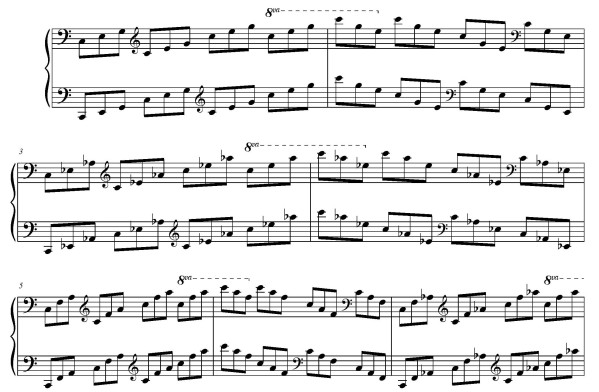
These are the first few measures of a comprehensive exercise for piano arpeggios. You can download the whole exercise at the bottom of this post!
I start with C as the bass note and then I systematically give you all the possible three-note arpeggios beginning on C. First the three possible major triads. Then the three minor triads, the three diminished triads, and finally the augmented triad. That’s ten arpeggios on C.
Next I move to C#, then D, and so on through all the notes in the chromatic scale. I’ve written out the exercise on staff paper for all the arpeggios. You can download it at the bottom of this post along with a “cheat sheet” that shows you the order of the triads on each starting note.
HOW TO PRACTICE ARPEGGIOS
1: SLOW PRACTICE
So, how should you practice this exercise? First, a disclaimer. I’m an experienced concert pianist and piano teacher. But using the exercise on this blog post is not a substitute for supervision by a qualified piano teacher. If any aspect of your piano practice causes you physical discomfort, stop immediately and seek medical input along with live input from a qualified piano instructor. Additionally, though I am very confident that this exercise is useful, I cannot promise that you will achieve professional-sounding arpeggios by using it.
OK, now that that disclaimer is out of the way, here’s my suggestion for how to practice the exercise.
First, if you’re not really familiar with arpeggios, spend the first couple of days each week practicing it very slowly. And don’t worry about playing the exercise in all twelve keys. That would be 120 different arpeggios and it would take a ridiculous amount of time. Just practice very slowly and get used to the way each chord moves to the next. Get through as much of the exercise as you have time and patience for. Then focus on that portion each time you practice until you have completely mastered it. When you feel really confident about that portion of the exercise, move on to the next portion.
The good news is that the fingering for arpeggios is not like the fingerings for scales. Scales have different fingerings for different scales. But for arpeggios, you’ll begin every set with the thumb in the right hand and play either 1-2-3 1-2-3 1-2-3 or 1-2-4 1-2-4 1-2-4 depending on what’s most comfortable for you. And when you reach the top, you’ll end on 5 and turn around. In the left hand, you’ll begin on 5 and then play either 3-2-1 3-2-1 3-2-1 or 4-2-1 4-2-1 4-2-1. You’ll end with 1 at the top and then turn around.
2: TWO EXERCISES TO SPEED UP ARPEGGIOS
Once you’ve become completely comfortable with the shape and the order of these arpeggios, there are two exercises I recommend to help speed them up. One is to play each note three times, quite rapidly.  This gives you the experience of moving quickly from note to note. But because you play each note three times, your brain has three times as long to process how to move from note to note as it would have if you were just playing the arpeggio as fast as you can.
This gives you the experience of moving quickly from note to note. But because you play each note three times, your brain has three times as long to process how to move from note to note as it would have if you were just playing the arpeggio as fast as you can.
ANOTHER DISCLAIMER: Now, I have to warn you, this type of exercise can be strenuous. If your arms or hands feel tense as you do this exercise, STOP and let your hands hang at your sides until they feel relaxed. Don’t shake your arms out, just let them rest. Also, as you do this exercise, make sure you’re not clenching your arms, tightening the muscles, or using extra motion beyond what you need to press the key.
The other exercise I recommend for speeding up your arpeggios is this combination of grace notes and fermatas.  It’s very similar to an exercise I recommend for speeding up your scales. And it works for the same reason. This exercise gives you an opportunity to play portions of the arpeggio faster than you’ll ever need while simultaneously giving your mind the time to really think about HOW to play the arpeggio.
It’s very similar to an exercise I recommend for speeding up your scales. And it works for the same reason. This exercise gives you an opportunity to play portions of the arpeggio faster than you’ll ever need while simultaneously giving your mind the time to really think about HOW to play the arpeggio.
You start by playing the first note of the arpeggio and taking as long as you need to think about how your fingers are going to move, how your arms are going to move, how your whole body is going to lean to bring you to the next held note. And then you zoom as fast as you can to that next held note.
Since these arpeggios have three notes, I’ve made the exercise to encompass four notes of the arpeggio. See, if you begin on C and then zoom ahead to the next C and then the next C, you’re not mastering every possible transition the arpeggio is going to throw at you. But if you play C-E-G-C and then land on E, and then after the E you play G C E and land on G, you’re getting experience playing every part of the arpeggio as fast as possible.
YOUR ARPEGGIO PRACTICE ROUTINE
You can do triplet practice and grace note practice on the same day, or you can do one of them for two days and the other one for the next two days. Doing each exercise two days in a row is more effective than doing them on alternate days.
If you do both exercises on the same day, it doesn’t matter which one you do first and which you do second. But make sure to end each day by doing a round of very slow practice, even after you feel you’ve mastered the arpeggio. It’s the slow practice that really cements the material in your mind.
HOW MUCH SHOULD YOU PRACTICE ARPEGGIOS?
There are 120 different arpeggios in this exercise. But like I said before, you don’t need to practice them all at once! The point of the exercise is not to teach you how to play 120 arpeggios in a row, after all—you’d never do that in a concert, right?
This exercise is to teach you to play each of these 120 arpeggios whenever some of them come up in a piece of music. If you spend a week practicing only the ones that start on C, and then another week the ones that start on C#, and so on you will learn all of them in just a few months.
Now, once you’ve learned all the arpeggios, sure, you’ll get rusty if you don’t practice them for a while. But the skill will come back very quickly. I’m a concert pianist and I do not play all the scales and all the arpeggios every day. But because I made my way through all of them, if I’m playing a piece of music that uses scales and arpeggios, it takes very little effort to brush up on the scale or arpeggio I need to play in that piece.
And the great thing is, once you’ve mastered these three-note arpeggios, you can build on them. If you’re working on a piece that has some seventh chords in arpeggios, you can practice those with triplet and grace note practice, too. You could even add the seventh of the chord into the arpeggio exercise in this lesson and make an exercise for yourself of arpeggios in seventh chords.
A PDF AND A VIDEO
As I promise, you can download a PDF of the arpeggio exercise along with a “cheat sheet” that outlines the order of all the triads on all the starting notes.
I’ve also made a video with all this information and some demonstrations. It’s right below, and you can also watch it on YouTube. Meanwhile, if you have any questions, please comment below this post.
And if it would be helpful for me to work closely with you as you practice the piano, please send me an e-mail through the contact form in the top menu to set up individual lessons.
If this post has been helpful for you, please share it! And please subscribe to my e-mail list below so you can know as soon as I put up my next post. Until next time, happy practicing!


